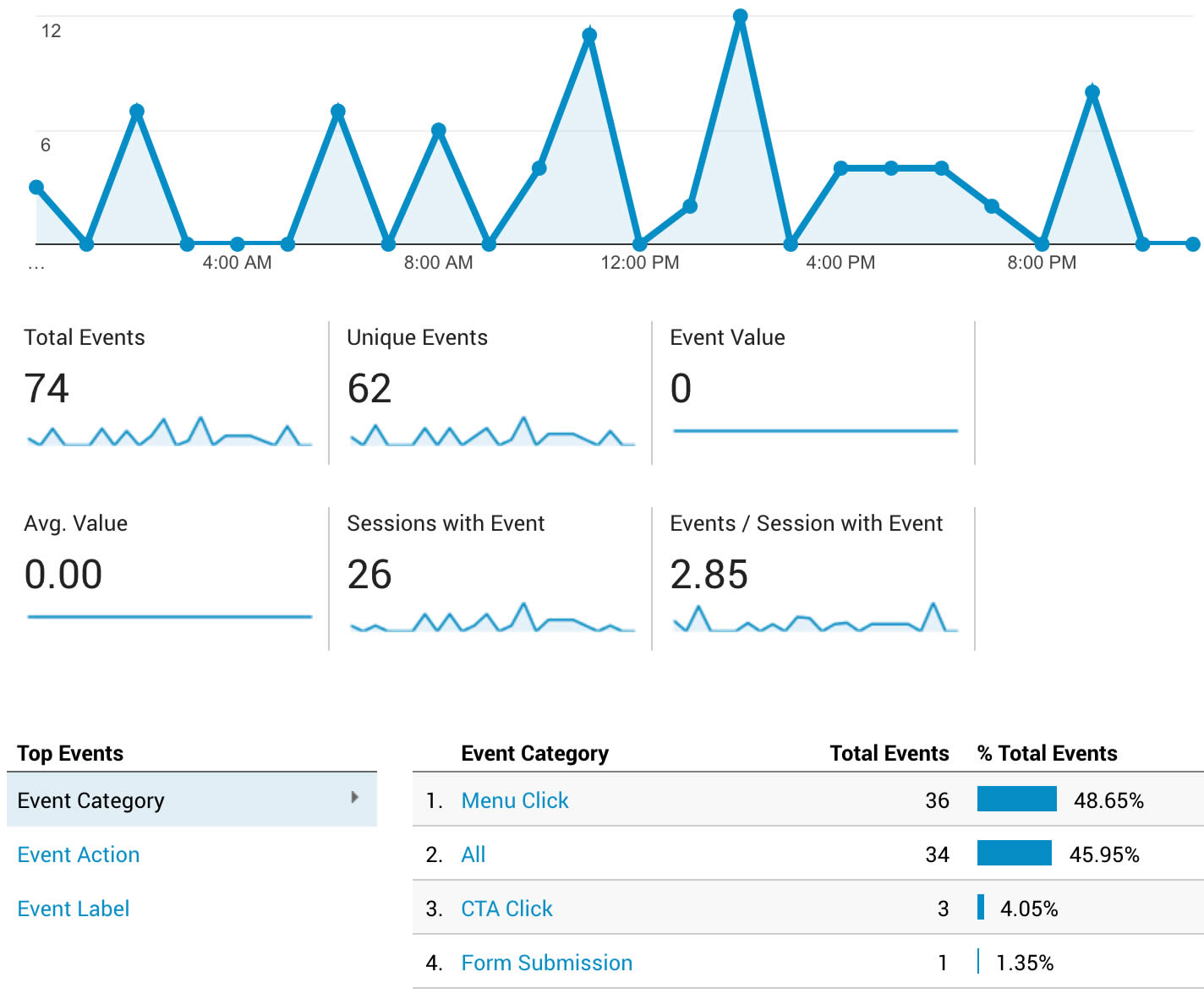Things about Google Analytics Event Tracking
Wiki Article
Getting My Google Analytics Event Tracking To Work
Table of ContentsAn Unbiased View of Google Analytics Event TrackingGoogle Analytics Event Tracking for DummiesA Biased View of Google Analytics Event TrackingAn Unbiased View of Google Analytics Event TrackingThe 30-Second Trick For Google Analytics Event TrackingUnknown Facts About Google Analytics Event Tracking

If you're mosting likely to establish event tracking manually, then you're mosting likely to have to add some additional code to the aspects you wish to gather data from. The code you're mosting likely to deal with will look something such as this: There are four parts within that code fragment that you're mosting likely to require to define yourself: occasion, Group, occasion, Action, occasion, Label and event, Value.
As you can see, two of these are called for (category and action) while tag and value are optional. All of it depends on the sort of details you want relayed back to Google Analytics when an individual clicks the specified element (Google Analytics Event Tracking). It will be a lot easier to define these elements if you analyse your web site and decide which elements/actions you intend to track
Some Of Google Analytics Event Tracking
Currently, you'll be asked to specify the and and you'll wish to choose from the drop-down menu that shows up when you click on. This will raise the exact same occasion monitoring elements we considered earlier, which you'll need to submit. Once you have actually specified these, you can move to the 2nd box and choose the trigger that will fire your tag.On the following display, you'll likewise have a field for naming your trigger and, if you click the box, you'll see a list of the various triggers you can choose. In this instance, we want to select and afterwards select the alternative below. After that you'll set the trigger to only discharge when an element is clicked with an URL which contains the.
Every site talks. Before information analytics, we could not listen to the voices of our web sites. Yet how do you know what your website is saying? Simple - Event monitoring! pop over to these guys Occasion tracking gives you a picture of just how customers involve with your site and service (Google Analytics Event Tracking). Do you desire to understand more? Check out on as we explore whatever you require to know, including what it is, why you ought to track occasions, exactly how to handle occasions data, and other pertinent Frequently asked questions you may have.
Getting The Google Analytics Event Tracking To Work
You can switch between your occasion classifications, actions, and labels in the Top Events report. The Occasion Pages record shows the pages where events are set off.It shows you the course they take as they relocate from one occasion to the following and assists you to figure out which content engages your target market the many. Occasions in Google Analytics have four main elements. They are additionally a component of the event tracking code. Google Analytics uses these codes to track individual interactions and group them into event records.
A list of the parameters you can track on your internet site is on the. After examining all essential areas, you can click "X" to close the home window and return to the Introduction food selection on the.
The smart Trick of Google Analytics Event Tracking That Nobody is Discussing

If you haven't done so, you might require to set up see this a variable in the Google Analytics Setups box. After this, enter your GA monitoring ID in the Monitoring ID area.
To do this, follow the next series of actions: After setting up the fields, choose the "Triggering" area. When configuring your new trigger, click the "+" switch, then the "pencil" button, after that select your trigger kind.
More About Google Analytics Event Tracking

When it familiarizes which areas and aspects are guiding clients with your conversion funnel, you still will not know. So, without occasion tracking, GA records will just count visits as single-page sessions, also if individuals invest a lot of time on one page and involve with it dramatically (and a bounce).
Exactly how does event tracking accomplish this?Single-page sessions understood as bounces begin and end on the very same web page. Without occasion tracking, GA will certainly categorize a user's visit as a bounce if they do not browse to an additional web page, no matter just how they connect with it. For instance, a video-rich web page can have a higher bounce price if occasions are not tracked.
8 Simple Techniques For Google Analytics Event Tracking
However, for GA to take occasion hits into account when measuring bounce rates, you must pick "Non-interaction event" as "False" throughout the GTM setup. Establishing "event objectives" with event action is a superb means to monitor user tasks you worth highly, such as new lead submissions or clicks on a contact us to action.Report this wiki page